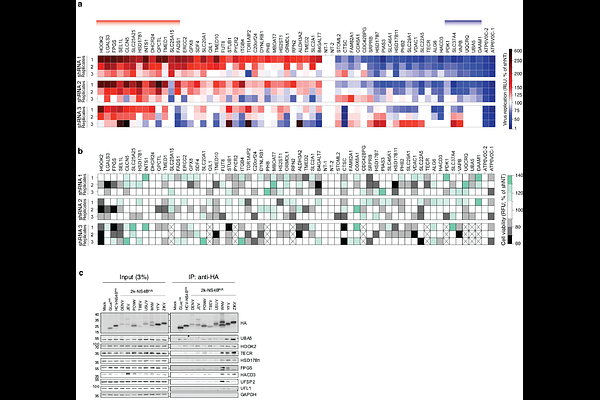A genus-wide interaction atlas across NS4B orthologues identifies a conserved role for UFMylation in orthoflavivirus replication

A genus-wide interaction atlas across NS4B orthologues identifies a conserved role for UFMylation in orthoflavivirus replication
Rajasekharan, S.; Barragan Torres, V. A.; Cortes Pinheiro Gomes, Y.; Wilken, L.; Overhoff, K.; Lin, Y.-C.; Patten, S. A.; Watanabe, S.; Chatel-Chaix, L.; Scaturro, P.
AbstractOrthoflavivirus infections represent an increasing public health burden, with several members of the genus emerging or re-emerging globally. Despite the availability of few vaccines, no antiviral drugs are currently licensed for the treatment of orthoflavivirus infections. Several pre-clinical studies identified the non-structural protein 4B (NS4B), one of the least characterized viral proteins within the orthoflavivirus genus, as the most promising target for the development of potent direct-acting antivirals. However, its functional roles in viral replication are still elusive. Here, we employ an integrated proteomic approach to systematically identify cellular targets of NS4B across eight prototypic orthoflaviviruses and characterize their influence on the human proteome. Using this approach, we mapped high-confidence NS4B-interacting human proteins across the genus, underlying potentially divergent mechanisms of host adaptation across orthoflaviviruses spanning diverse pathologies and vector preferences. Among these, we unveil a novel function for UBA5, the E1-activating enzyme of the UFMylation pathway, in orthoflavivirus replication. Mechanistically, we map associations of distinct viral proteins with multiple members of the UFMylation pathway, which are selectively recruited to sites of viral replication to promote mitochondrial respiration. Finally, we demonstrate that pharmacological inhibition of UFMylation exerts potent antiviral activity in vitro and in vivo. This integrative study provides a rational framework for a system-level understanding of orthoflavivirus NS4B effector functions and sheds light on a conserved and unconventional role for UFMylation in orthoflavivirus replication.